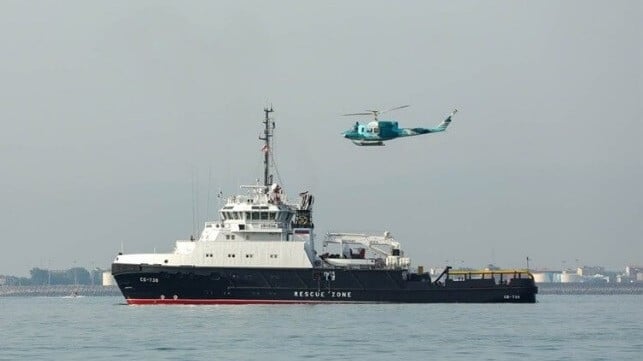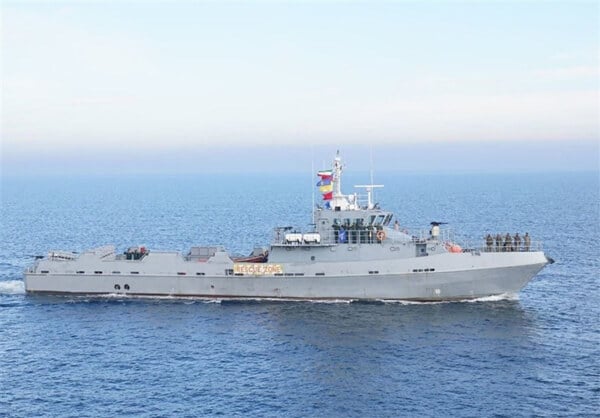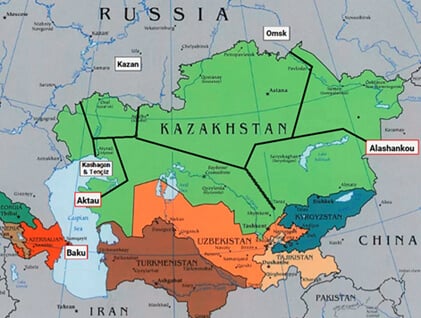Weakened Iran Clings to Russia in the Caspian Sea

Iran and Russia have concluded a short naval exercise in the Caspian Sea, which both nations may have regarded as an opportunity to shore up relationships in a region where both have recently lost friends. Iran, in particular, felt let down by the lack of Russian support during the 12-Day War with Israel - she received some support from China, but none from Russia. Iran is also at present highly nervous about porous border security, and wants to demonstrate heft in this area.
CASAREX 2025 commenced on July 21 and concluded two days later, under the direction of Commodore Mohsen Razzaghi. He announced via IRNA that the Nedaja, the IRGC Navy (Nedsa), and Iranian law enforcement forces would take part, alongside vessels from the Russian Navy. Observers would also participate from the three other Caspian Sea littoral nations - Azerbaijan, Kazakhstan, and Turkmenistan.
In a video released by IRNA, the only evidence seen of Russian involvement has been the presence of the civilian rescue tug SB 738 (MMSI: 273544130). Nedaja vessels participating (at least in the end of the exercise parade) were Sina Class fast attack craft Paykan (P224), Joshan (P225), Derfash, and Separ (P234). Also present was the IRGC Navy’s Nasser Class auxiliary Martyr Basir (117), which appears to be equipped with Zafar/C704 anti-ship missiles and normally operates from the Samen al-Hojaj Naval Base at Babolsar, Mazandaran Province.

The IRGC Navy’s Martyr Basir (Tasnim - CC BY 4.0)
There was no evidence of the participation of the observers, and the Iranians have an established record of announcing the involvement of other nations in their exercises without their consent or participation. The Caspian Post, an Azeri media outlet, covered the exercise but made no mention of Azeri participation.
Relations between Russia and Azerbaijan are particularly stretched at the moment. Azerbaijan is furious about a series of arrests made of Azeris working in Russia, and still seething about the deaths of 38 passengers following the missile attack on an Azerbaijan Airline Flight 8243 coming in to land at Grozny on Christmas Day 2024, heightened by the Russians’ callous handling of the incident. Nor are Azeri relations with Iran much better, following Iranian suggestions of Azeri complicity in the Israeli air attacks on Iran during the 12-Day War.
Both Turkmenistan and Kazakhstan have grown tired of Russian bullying. Much of this springs from the Ukraine war and Russia’s assumption that it is still owed duties by these former Soviet states. At the St. Petersburg Economic Forum in June 2024, President Tokayev of Kazakhstan, on stage with President Putin, refused to recognize Russian annexations in Ukraine and Georgia. He also stated his country would respect Western sanctions on Russia, and he turned down a request to provide Kazakh troops to fight in Ukraine. Most of Kazakhstan’s oil production is exported through the Caspian Pipeline Consortium (CPC) network, which pipes through Russia and terminates at Novorossiysk on the Black Sea. However, Russia also uses the CPC network to export its Urals oil from Omsk and Kazan through Kazakhstan to China. Uncomfortable in this mutual inter-dependency, the Kazakhs have been developing their capability to export instead across the Caspian from Aktau to Baku, using shallow draft tankers built with Abu Dhabi Ports Group specially for Caspian operations. From Baku, the Kazakh oil can then use the Baku-Tbilisi-Ceyhan pipeline, thereby avoiding Russian territory.

Main Kazakh oil pipelines (data from Kazakhstan-China Pipeline LLP/CJRC)
The geography of the Caspian means that Azerbaijan, Turkmenistan, and Kazakhstan, which have not enjoyed close relations hitherto, are being drawn into closer cooperation. Controlling the middle section of the Caspian, working together these three nations could impede shipping between Iran and Russia. This is an unlikely prospect for now, but a risk with some growth potential. Ukraine would be keen to spread discontent, so as to disrupt arms supplies flowing up the Caspian from Iran into Russia.
Russia controls the only access to the Black Sea through the Volga-Don canal. For now, the 28-strong Caspian Flotilla remains dominant, comprising the two Gepard Class frigates damaged in a Ukrainian attack on November 6 last year, plus 16 corvettes and minesweepers. The Iranian Northern Fleet, forming its 4th Naval Region, is led by Moudge Class frigate IRINS Deylaman (F78) with the four Sina Class fast attack craft, each armed with a 76mm gun and C-802 anti-ship missiles, which participated in CASAREX 2025. Together, Russia and Iran are much stronger than Azerbaijan, Kazakhstan, and Turkmenistan. But the Azeris have of late been militarily clever, upgrading their navy with Israeli and Turkish assistance; they also operate Triton Class midget submarines, the only such craft stationed in the Caspian.
Bilateral relations will not have been improved, and the Russians may have been tempted to return home somewhat earlier than planned, having heard the Iranian version of the Russian anthem as SB 738 was welcomed into port. Sailors worldwide will have endured similar ordeals on port visits, but this rendition of the Russian National Anthem was even more insulting (in the opinion of the Maritime Executive’s correspondent) than the famous Egyptian and Saudi salutes to President Putin in 2015 and 2019, respectively.
